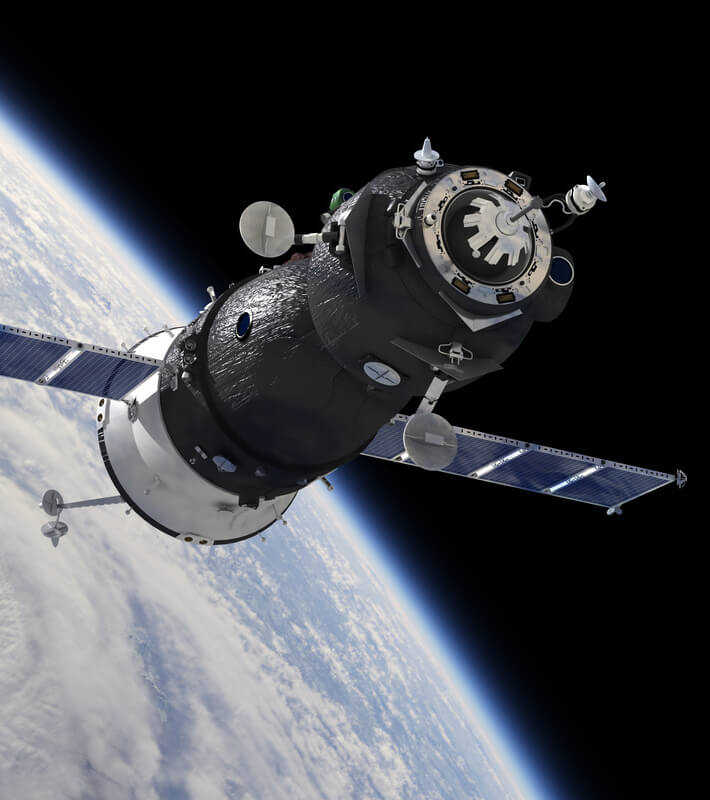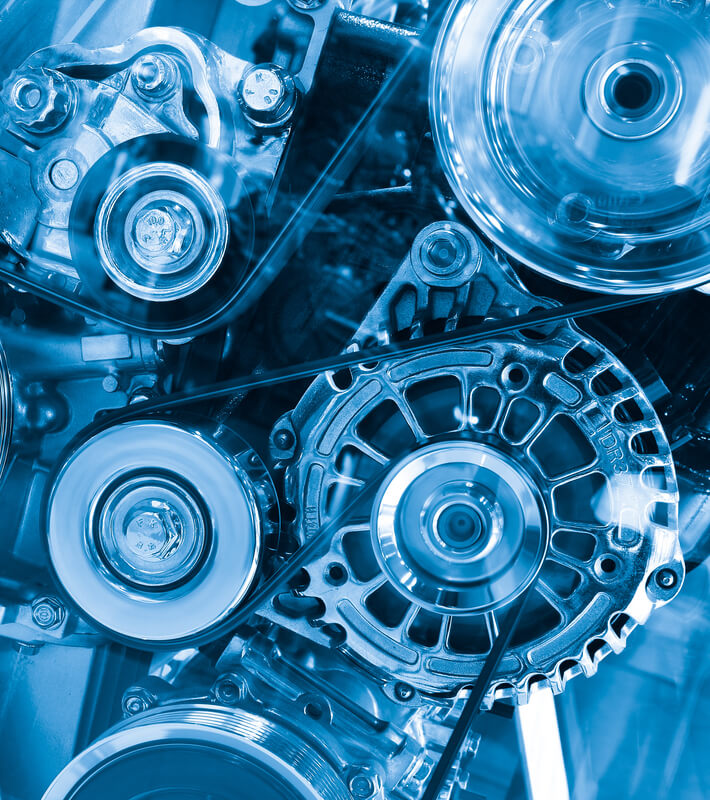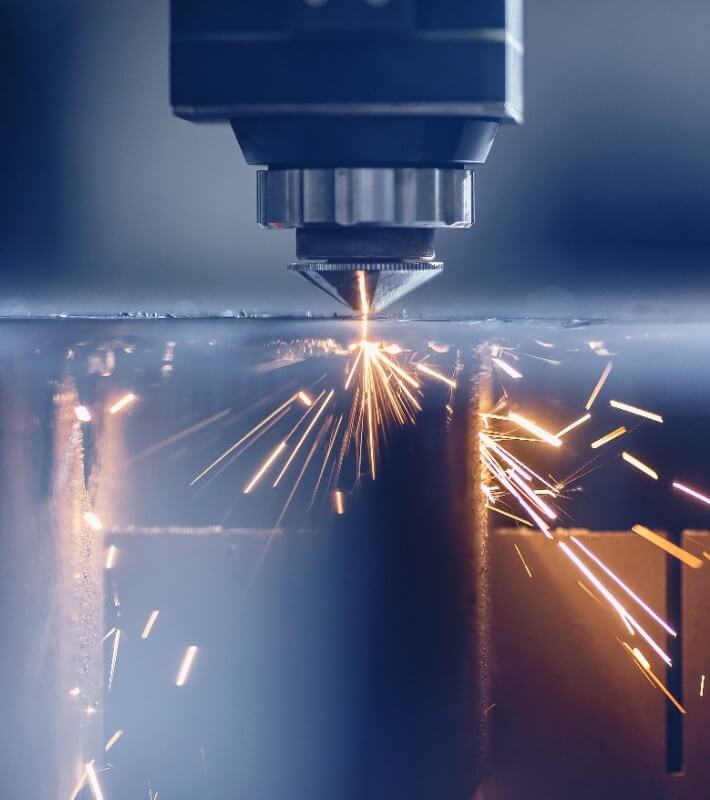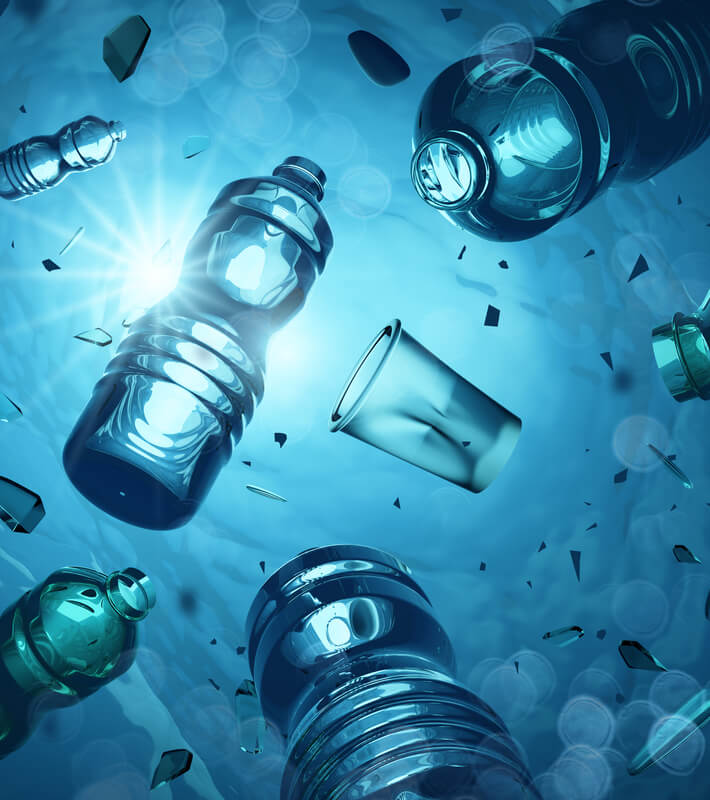Infrared Detectors in IR Spectroscopy

A variety of spectroscopic techniques are used in gas analysis and sensing – increasingly important fields – crucial in atmosphere monitoring, emission control and industrial processes efficiency. They are implemented more and more often a mass scale to ensure the well-being of humanity and the environment around us. A thorough understanding of those techniques enables the development of modern, cost-effective and efficient gas analysis solutions, best suited to specific applications and squeezing the most out of the laser spectroscopy potential. VIGO Photonics has vast experience in supplying components and solutions for gas analysis systems. With this paper, we intend to spread the knowledge about the most prominent laser spectroscopic techniques and how to choose the best detector for your laser gas analysis system.
Basics
Essentially, a laser gas analysis system consists of two main parts: a transmitter and a receiver. The transmitter is, of course, a laser system, along with all the necessary control electronics. The transmitter’s role is to emit the light into the analysed gaseous sample. The receiver is composed of the photodetector, along with all the necessary optical components, and a readout system. Its role is to register changes of the radiation introduced by interaction with the gaseous sample and show them to the operator in a clear, easy-to-interpret way

Figure 1. Typical layout of an infrared gas spectroscopy system.
Choice of proper laser light source, photodetectors, and accompanying electronics always depends on the used analysis technique. They all need to be carefully matched not only to the application, but, most importantly, to the molecular species which we intend to sense and analyse.
Absorption principles
The main mechanism of light-matter interaction in laser spectroscopy is absorption – a portion of light gets absorbed by the gaseous molecule, which results in a change in the molecule’s energy level. The wavelength of absorbed light must be precisely fitted to the energy gap between individual rovibrational levels. A single absorbed wavelength constitutes an absorption line on the radiation spectrum, and a collection of absorption lines makes for an absorption spectrum. This is sometimes called a molecule’s fingerprint, as it is unique for each and every molecular species. Each absorption line has different intensity – the higher it is, the more light will be absorbed, increasing the method’s sensitivity and facilitating detection of lower concentrations of gases.

Figure 2. Normalised absorption spectra of most popular gaseous species.
Quantitative description of absorption is provided by the Beer-Lambert-Bouguer law, which connects intensity of absorbed light with type and concentration of the molecules:
I(λ,x) = I0 (λ) exp(-σ(λ)Nx)
We start with shining the light of intensity I0 (usually dependent on the emitted wavelength λ, which needs to be fitted to the selected absorption line) onto a sample containing the absorbing species. There, some of the light gets absorbed, resulting in the attenuaion of the outcoming light intensity. The level of absorption is dependent on: optical path through the absorbing species x, concentration of the species N, and absorption cross-section σ, which has a specific value for each absorption line, and, hence, for every molecule and wavelength. Based on this, it is possible to determine the presence and concentration of various types of molecules. Naturally, it is essential to have knowledge about the exact values of optical path and absorption cross-section in given ambient conditions. The latter are easily available through databases like HITRAN.

Figure 3. Comparison of absorption lines’ strength for different wavelength regimes.
Tunable diode laser spectroscopy – overview
TDLS is one of the most widespread spectroscopic techniques used in gas analysis and detection. It is also known as TDLAS or TLS. A simplest TDLS setup is shown below.
Here, the light source is usually a laser of sorts. The most popular are naturally distributed feedback (DFB) diode lasers, namely quantum cascade (QCL) or interband cascade lasers (ICL). With the advent of more affordable and available technology, VCSELs start to be used in those setups as well. As the whole principle of TDLS is based on the tunability of the light source, a steering console with appropriate electronic devices is needed to control and modulate the light coming to the sample. The emitted light goes through the sample on a set and known optical path, where it is partly absorbed by the analysed gases.

Figure 4. Layout of a typical TDLS setup. System console used for controlling light source and detector readout is clearly visible.
Infrared wavelengths correspond primarily to energy gaps between various rotational and vibrational states. In particular, the mid-infrared region (~3-14 µm) is promising for performing absorption spectroscopy because of the much higher intensity of certain absorption lines in comparison to near-infrared (1-3 µm) wavelengths. An increase of up to 100x in line intensity can be observed, e.g. for CO2 molecules (Fig. 3.) – this means the concentrations of detected species can be much lower to create a noticeable signal difference. Another advantage of mid-IR is a multitude of absorbing species in this region and high separation of lines of different molecules, which helps achieve selectivity of detection. Higher absorption cross-sections mean a shorter optical path and, therefore, a more compact setup.
Right now there is a multitude of spectroscopic techniques being used in the mid-infrared. We will describe the principles of the most important ones and indicate the proper choice of our detectors for each application.
The light signal is then collected by a photodetector, carefully chosen to best fit the adapted light source and readout technique. After going through some electronic processing, the collected signal is then ready to be displayed and interpreted. TDLS has some significant advantages which account for its popularity. It is a relatively simple technique, not requiring many elements in the setup. Use of fast tunable lasers and fast-response photodetectors enables real-time operation. Appropriate design of the system enables non-contact, remote measurements and enhancements in sensitivity and efficiency can be achieved in many ways. Of these, the two most common are increasing the optical path through the absorbing sample and introducing modulation to the light source. The light modulation techniques covered below are: Direct Absorption Spectroscopy (DAS), Wavelength Modulation Spectroscopy (WMS) and Frequency Modulation Spectroscopy (FMS). They may also be known under other names. Demodulation of the received signal by appropriate electronics enables the elimination of random noises and, therefore, improves the lowest detectable change in the light intensity, and also the lowest detectable concentration. Optical path increase is most commonly achieved by introducing an external cavity. The simplest technique is Multipass Spectroscopy (MUPASS). A more sophisticated cavity is used in Integrated Cavity Output Spectroscopy (ICOS).
Light modulation techniques in TDLS
In the most typical TDLS setup, the laser driving current is modulated, which results in a change in both emitted wavelength and intensity. A variety of modulation shapes may be used, as well as other types of modulation (e.g. by chopper).
The simplest modulation technique is Direct Absorption Spectroscopy, where the modulation period (in terms of emitted wavelength) is much broader than the absorption profile chosen for measurement. As a result, recorded changes of intensity in time contain two symmetrical dips (Fig. 5.). These signify passing through an absorption profile and are doubled because of the symmetry of modulation. Naturally, the amplitude of the intensity dip can be used to calculate the concentration of molecular species. Therefore, DAS is one of the simplest modulation techniques.
The technique known mainly as Wavelength Modulation Spectroscopy differs from DAS primarily in the range of wavelength modulation. Here, the modulation period is much narrower than the absorption profile. Thus, the modulation is imposed onto the absorption profile and can be in various relations to it (Fig. 6.). Depending on the placement, it is possible to register the signal on the same frequency as the modulation’s (1f signal), or double the frequency (2f signal) – in the case of placing the modulation in the peak of the absorption profile.
After the demodulation, the registered absorption peak differs from 1f to 2f signals. As can be seen from the exemplary signal curves (Fig. 7.), it is more beneficial to use 2f signal, as the resulting curve has a clear shape of a peak, where its height can be interpreted as the relative absorption intensity – similarly to DAS.

Figure 5. Exemplary detector signal intensity vs time in DAS. Note dips in intensity corresponding to passing through an absorption wavelength.

Figure 6. Principle of WMS. Absorption profile is marked in blue. Wavelength modulation is imposed in relation to the profile – marked by vertical sine signals in gray. Modulation results in 1f or 2f signals depending on the modulation placements.

Figure 7. Differences between exemplary 1f and 2f signals registered in WMS.

A much more sophisticated technique is the Frequency Modulation Spectroscopy (FMS). Here, the frequency of the laser light is modulated much more rapidly, which results in additional side bands showing in the laser’s emission spectrum. The side bands appear on the left and right of the main emission profile and are equally spaced from the centre.
The beating signal of the laser frequency side is measured in this technique. In normal conditions, i.e. without absorbing species in the light path, the beating cancels out – resulting in a plain DC signal on the detector. However, when one of the sidebands’ intensity is lowered due to absorption, the beating signal is non-zero and results in another AC signal being introduced in addition to the DC background. Amplitude of the AC signal can, therefore, be interpreted as dependent on the absorption intensity.
For this reason, it is crucial in FMS to carefully place the modulated laser’s emission spectrum in respect to the absorption profile – so that one of the sidebands represents the wavelength of much stronger absorption than the other. This technique is more rarely used but is, nevertheless, very sensitive.

Figure 8. Principle of FMS. Left: modulated signals show the light sidebands, however, without absorption, the resulting signal is DC. Right: with one of the sidebands aligned with an absorption line, the detected signal shows an additional AC modulation.
Extending the light path in TDLS
The second second way of increasing the sensitivity of TDLS is to enhance the optical path. Most commonly, external cavities are used – due to the desire to preserve the compactness of the gas sensing devices. A collection of such techniques falls under the umbrella term Cavity-Enhanced Absorption Spectroscopy (CEAS). We will provide insight into two of the most popular cavity techniques: MUPASS and ICOS.

Multipass absorption spectroscopy (MUPASS) relies on a simple increase in the optical path via a carefully designed cavity, where – as the name implies – the light beam travels multiple times before hitting the detector. The gas sample is enclosed by the cavity.

Figure 9. Layout of a typical MUPASS system. Here a Herriott cell is used; however, other cell designs are possible.
There are numerous layouts of the multipass cavity available. The most common are White or Herriott cells, which are tubular in shape and have mirrors on the ends to reflect the laser beam in such a way that facilitates the highest possible optical path within the cavity. Currently, such cells are being made commercially available and make fast prototyping and cost-effective manufacturing possible. There are also other more specific cavity designs, such as circular, vertical and so on. Those more sophisticated designs allow an optical path through the analysed sample of hundreds of metres – all within a tabletop instrument.
Another widely used cavity technique is the Integrated Cavity Output Spectroscopy. The first variant of this method incorporates a resonant cavity with the length between the high-reflectivity mirrors carefully tuned to the laser’s emitted frequency. However, this proved to be impractical outside the laboratories. The more popular and robust variant of this method is the ICOS-OA – and off-axis variation, which utilises the same cavity, but in a non-resonant way.

Figure 10. Layout of a typical ICOS-OA system. Note the input of the light at an angle (“off-axis”) and collection of light signal from the whole surface of the back mirror.
Here, the detected light signal behind the cavity is very low because of high reflectivity of the mirrors, but output from the whole back mirror surface is collected and, because of the design of the cavity, the light path is virtually infinite. Hence why the ICOS-OA is a very interesting and sensitive technique.
Choosing the right detector for TDLS
TDLS is a reasonably simple and highly efficient technique for gas analysis. In order not to waste its potential, all the elements of the system need to be suited to the job. High-performance light detectors are a crucial part. The spectral and frequency response need to be carefully matched to the laser source and modulation technique in order to provide the best SNR.
Another vital parameter to be taken into account is the linearity of the detector’s response. High linearity range allows easier readout and interpretation of signal and, therefore, simplifies the design of the electronic part of the setup. All of these requirements are met by VIGO’s photovoltaic (PV) detectors – available in a broad range od spectral variants and with low-time constants, ensuring proper frequency response. In PV detectors, biasing is available and recommended especially for high-frequency systems – biasing of photodiodes greatly enhances speed of response and linearity range, thus making it the perfect solution for demanding TDLS applications. VIGO PVs are available as MCT (mercury-cadmium-telluride) detectors and also RoHS-compliant III-V materials detectors. For custom applications, we are happy to provide tailored spectral responses, bandpass filters, design-in electronics, etc. VIGO preamplifiers are also available with low-noise electronics and fitted spectral response to provide the highest performance of the detection module.
In laser applications where the wavelength changes in small ranges – just like TDLS – fringing becomes a big problem. Fringing is described as additional modulation of the system’s transmission coefficient, caused by different interferences of the light at various wavelengths. Fringing occurs in the detector itself as well due to the interferences on different wafer levels. Solving the fringing problem can mean a huge boost in sensitivity and efficiency of the TDLS systems. VIGO provides standard wedged windows with AR coatings to prevent unwanted interferences occurring in the detector’s window. AR coating on the detector’s active area is also available upon demand. Moreover, VIGO is developing new innovative products with anti-fringing solutions implemented on the wafer level, which are planned to enter serial production soon – so be sure to stay in touch and find out about our latest developments.
Below you can find our recommended picks of VIGO detectors for sensing of the most popular gases:
Gaseous species
Selected absorption line [μm]
Recommended VIGO Photonics detector/module
Water vapour H2O
2.9, 6.3
PV-xTE-3, PVA-xTE-3 (RoHS compliant), PV-xTE-6, UM-I-6
Carbon dioxide CO2
4.3, 9.4
PV-xTE-5, PVA-xTE-5 (RoHS compliant), Affordable Module AM03120 (RoHS compliant), PV-xTE-10.6, PVM-xTE-10.6
Methane CH4
3.3
PV-xTE-3.4, PVA-xTE-3 (RoHS compliant)
Nitrous oxide N2O
4.5
PV-xTE-4, PVA-xTE-5 (RoHS compliant), Affordable Module AM03120 (RoHS compliant)
Nitrous dioxide NO2
6.2
PV-xTE-6, UM-I-6
Carbon monoxide CO
4.6
PV-xTE-4, PVA-xTE-5 (RoHS compliant), Affordable Module AM03120 (RoHS compliant)
Cavity ring-down spectroscopy
This technique, known as CRDS, also relies on the external cavity filled with the gas sample. However, there are crucial differences in the method of operation of a CRDS system in comparison to TDLS. The light source is usually a mechanically modulated or pulsed laser. The cavity has high-reflectivity mirrors on both ends, aligned so that the light beams passes through the same path over and over. After each pass, a small portion of the light signal exits the cavity through the back mirror. Therefore, the recorded response consists of a series of signals. An exemplary single ring-down response is described below.

Figure 11. Typical CRDS system with a vertical cavity used. Below: principle of detecting a CRDS system response.
First, the laser pulse enters the cavity. During this phase, the first series of stronger and stronger signals is recorded – marking the build-up phase. Then, the laser input is shut down. After that, the light is still in the cavity, but with each pass the beam is weaker and weaker – naturally due to absorption by the sample. Therefore, the signals registered by the detector also get exponentially weaker – this is called the ring-down phase. By fitting the curve to the registered series of signals and calculating the decay time, one can get information about the concentration of the gas in the sample can be obtained.

Figure 12. Comparison of ring-down signals with and without absorbing sample. A: response with absorbing sample in place. B: response without absorption. Formulas linking concentration of a sample with ring-down time are provided. Note constitution of a ring-down curve of numerous single signals.
CRDS is a highly accurate and sensitive technique, beating records in terms of lowest detectable concentrations – however, for proper operation, good calibration and stable cavity designs are required. The continuous development of CRDS allows it to be used even in such demanding conditions as airborne systems.
Similarly to TDLS, the most important parameters for a detector to fulfil its role in a CRDS system are: spectral and frequency response, which have to be carefully matched to cavity operation mode and expected ring-down times, as well as measured concentrations of gases and strength of absorption lines. Again, the photovoltaic VIGO detectors both from MCT and III-V materials with our low-noise electronics are well-suited for work in CRDS systems. Anti-fringing solutions are of lesser importance here, however, AR coatings can also help in achieving better results.
In CRDS, other issues arise. Stability of the detector readouts is even more important than in the other techniques, and due to the technique’s nature, high detectivity is crucial because of extremely low light signals reaching the detector (caused by the high-reflectivity mirrors being used). Therefore, the best pick for CRDS systems are thermoelectrically cooled PV detectors with immersion lenses. Those are a unique sales point for our detectors – monolithically integrated GaAs hyperhemispherical lenses enabling the increase of the detectivity of a detector element by as much as 11 times. When used with thermoelectrical cooling, these detectors provide unmatched parameters for CRDS applications.
Dual frequency comb spectroscopy
One of the most sophisticated techniques in gas spectroscopy, the Dual Comb Spectroscopy (DCS) is a slowly emerging but highly promising method. At the heart of the system lie two frequency combs – light sources with extraordinary emission spectra. A frequency comb emits light at numerous separate wavelengths at once, with equal spacing between the single emission peaks. The emission spectrum looks like a comb – hence the name. Spectroscopy using the frequency combs as light sources opens up unprecented possibilities in multiple gas detection with a single setup.
The DCS principle is usually as follows. Two frequency combs with slightly different repetition frequencies are used. Light from one of the combs goes through the analysed sample. Then both of the light signals are directed along the same axis, and a detector records an interferogram of the two signals. Finally, the data acquisition system performs a Fourier transformation in order to extract an absorption spectrum of the sample. DCS shows numerous advantages over the traditional spectroscopy techniques: not only wide wavelength range emitted at once, but also solid-state operation with almost no moving mechanical parts – enabling robustness and ease of alignment.

Figure 13. Layout of a typical DCS system.
The advent of more affordable frequency combs has resulted in increased popularity of DCS – and also stringent requirements for the detectors used in the technique. High linearity of response and low fringing levels are highly desired in DCS. But, most importantly, the detector needs to have an extraordinarily fast response (matching the combs’ repetition rate) and wide spectral range, not hindering the potential of the frequency combs. Hence why our recommendations for the DCS are photovoltaic multijunction PVM detectors or photoelectromagnetic PEM detectors, combining wide spectral range (with even response over the whole range) with short time constants. Even faster readout can be achieved using biased PV detectors, especially in our standard Ultra High-Speed Modules (UHSM).
Comparison of different detector types for DCS:
Detector type
Spectral range [μm]
Operation frequency
PEM
2-12
>150 MHz
PVM
2-13
>110 MHz
PV (biased)
3-12
>1 GHz (UHSM modules)
Application overview
Constant development of spectroscopy systems, environmental pressure for gas control and desire for a cleaner and more efficient world are the key drivers for new applications of gas sensing systems. In this brief overview, we provide a few ideas for potential applications.
The most prominent field in which gas sensing is developing is environmental protection and research. Monitoring of gas and aerosols levels in the atmosphere is increasingly important in the face of ongoing climate change and allows us to better understand climate and our influence on it. For gases whose impact we already know – e.g. carbon dioxide, methane and others – emission control is vital and increasingly regulated by law. This creates the need for affordable and sensitive gas analysis systems. Environmental measurements are taken not only by simple ground-based setups, but also in advanced airborne systems or in extreme conditions, like monitoring volcanic processes. The compactness and robustness of TDLS or CRDS systems enable precise in-situ measurements in all conditions. A huge portion of hazardous gases emitted into the atmosphere stems from industry. This field is not only increasingly pressured to improve its environmental record, but is also on the constant lookout for optimisation of various processes. Therefore, monitoring of various gaseous species, e.g. in furnaces, incinerators or during production is very interesting, as it provides real-time insight into the efficiency of industry and also enables more exact control over toxic or hazardous gaseous substances which may leak to the atmosphere.
This is important not only for the benefit of the environment, but also for workplace safety. The automotive is also becoming more interested in gas analysis – mainly for control of exhaust fumes during the design phase as well as periodical vehicle testing. Increasingly robust systems are slowly facilitating real-time fumes monitoring – with devices mounted directly on the vehicle in question. Benefits for the environment as well as air pollution control in cities are some of the most significant goals in development of such systems. The medical is patiently awaiting the advent of affordable and sensitive gas spectroscopy systems as research in breath analysis progresses. Accurate detection of biomarkers – substances indicating a certain abnormal state in the human body – would help in the diagnosis of cancer, pulmonary diseases and stomach infections. Cheap, fast and non-invasive diagnostic tools, like spectroscopic breath analysers using RoHS compliant detectors, would greatly improve our healthcare possibilities. These are some of the most prominent and interesting gas analysis applications, but naturally the list can go on. No matter what your application is – VIGO Photonics is ready to deliver cutting-edge detectors for your needs and share our broad knowhow in their applications.
Similar applications
All
Environment
Industry
Medical
Security and defense
Transportation

























